By David Hosley
(This is part of our ongoing series, Lost Kinjo- a look at the more than 40 Japanese communities that disappeared after World War II. It is supported by funding from the California Public Library Civil Liberties Project and the Takahashi Family Foundation.)
Construction is starting next week on an Asian American Heritage Park on the western side of California’s great delta watershed. The park is in Isleton, home to one of California’s Japantowns and is championed by a Japanese American woman who was born in a U.S. concentration camp during World War II.
Jean Yokotobi didn’t grow up in the Delta, but she came to know the small town of about 800 as a young adult and made it her home about 15 years ago. “As I spent more time in Isleton” she tells AsAmNews, “I became aware of Japantown and Chinatown together. These families were dying off, and history was being lost. There were no Japanese living here. Chinatown, you still have four or five families. There’s so much history here, but everyone’s forgotten the history.”
Her vision of a heritage park, she says, goes back to 2010 or so as she was becoming more involved with the business community, helping to revitalize the chamber of commerce, and becoming involved with the historical society.
The side by side Asian sections of Isleton had already been recognized on a national registry, but there weren’t Japanese Americans in town to tell their family’s story, so Yokotobi set out to work with others to do it. “I thought it was very important” she adds, “to honor those people who once lived here, and their history.”
It’s a rich story, tied to some of the most significant events in California’s past, but also relevant to the challenges of today, especially those of small towns and the diverse people who reclaimed soggy lands from nature and are now seeking to reframe their place in history.
Boats In The Bay and Delta
Isleton’s story is tied to the water, especially the Sacramento River and the San Joaquin and Sacramento River Delta. It is part of today’s linkage between San Francisco Bay and the ports of West Sacramento and Stockton.
The first nation on the land where Isleton sits was the Wintun, whose southern Patwin band lived in the part of the Delta near where the two major rivers join. They were the first to fashion vessels that could float, carrying people and possessions, including food. Larger craft were constructed by the Spanish missionaries and later New England sailors who came around Cape Horn.
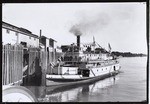
The first steam boat in northern California, the Little Sitka, plied San Francisco Bay under Captain William Leidesdorff, who piloted the 37 foot long craft to Sacramento in November, 1847. Two larger steam vessels were the McKim and the SS Senator which started runs through the Delta regularly in the fall of 1849. The McKim could make the voyage to Sacramento’s waterfront in less than a day, and at one point was doing it twice a week. By 1850, 28 steam boats were operating on the Sacramento River. Benicia and Rio Vista were often stopping off points for the steamers.
Overland travel was difficult in much of the Delta, due to the wetlands and frequent wintertime flooding. Yet settlers did come from the eastern part of the United States, starting in the Gold Rush and continuing in the 1850’s. Hugh Davis came then, and a Sacramento River Delta Historical Society article states he starting ranching with the help of Chinese laborers who had been forced out of the gold diggings. They built dikes that reclaimed land which could be planted. In 1852, Hart Fellows Smith crossed by oxen cart, felled trees on Grand Island and sold wood to steam boats needing fuel. He bought 160 acres near Jackson Slough. George Knott came to California in 1852 and moved to Andrus Island in 1855.
Isleton Is Founded
But the most significant settler, when it comes to Isleton, was Josiah Poole. An Army veteran, he came west from Illinois in 1852 and sought gold in the Sierra foothills for a few years. By 1855 he was in the Delta, on Andrus Island. Poole, who was a physician, started buying land.
He ended up with 800 acres on which he laid out, in 1874, the town that would be named Isleton. And he constructed a wharf, which meant access to Sacramento River ports.
By then farmers in the Delta were eager to create more farmable land. The levees would also provide dry and packed surfaces where they could drive wagons and other farming equipment. To do the work of improving their investments, the farmers turned once again to Chinese laborers. They were increasingly available because the building of the transcontinental railroad was over. While other railroads were being constructed within the Central Valley, those projects were on a smaller scale. So work gangs were recruited, and support systems were needed for them. A Chinatown began to appear in Isleton along the slough road that divided Andrus from Brannan Island. It provided supplies, a place to room and recreate, including gambling and inbibing.
Between 1860 and 1880, 140 square miles of Delta land was reclaimed and drained. That allowed for crops to be grown. Sacramento, Stockton and San Francisco became much more accessible, and so did the markets for goods that their residents represented.
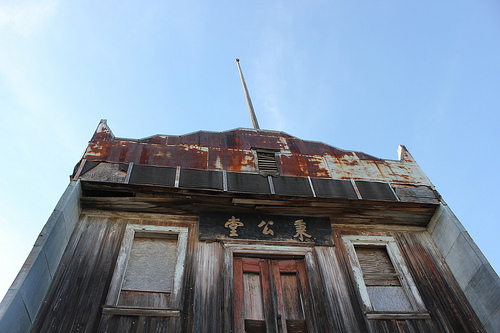
Isleton grew as the Delta became more connected to the region and beyond. It had daily steamer service, a general store, blacksmith, sugar beet processor and drug store. Floods were an annual threat, but a dredge has been secured to mechanize the levee building. As crops ripened, they were packed near the waterways and put on scows that took them to market or were off-loaded to bigger vessels.
The general store in Isleton was owned by Philip H. Gardiner, who had also started the Gardiner Improvement Company. And then applied to be postmaster, with the post office located in his building as well. He became the agent for steamboats which stopped in Isleton, and Wells Fargo Express. Gardiner’s family was involved in his enterprises, including his daughter Lucretia and his son, known as J.W.
Exclusion Act’s Long Tail
In 1882, growing anti-Chinese sentiment resulted in federal legislation that prohibited for 10 years immigration from China. It also outlawed citizenship for Chinese immigrants. The exclusion act effectively halted almost all Chinese immigration for decades. The law affected all of the states, but it was really about competition for jobs in California, Oregon and Washington.
How could farmers and other employers replace the Chinese? By turning to Japan, which was going through a tumultuous time because of the Meiji Restoration. Under pressure from Europe and the United States, Japan had been opened up to modernization.
But the southern Islands of Japan had been left behind, and the largely agricultural areas were struggling economically. Poor young men, particularly if they were not the eldest son in their family, looked to America as a place they could make more in wages. Some saw America as their future, others wanted to work a few years and return for marriage and a family.
So the first generation Issei sought a place where they could take their skills in agriculture and make more than they could in Hiroshima Prefecture or places even further south from Tokyo and Kyoto. It meant saving up or borrowing enough to buy passage to Seattle, San Francisco or Los Angeles. The sojourners were often met at the docks by a fellow countryman who could speak both Japanese and English, a contractor who would be paid for each individual he could deliver to a farming area on the west coast in need of hired help.

Japanese Presence Builds
According to historian Bill Hosokawa, the first Japanese arrived in the 1890’s in Isleton. They were cheaper than to hire, with Caucasian field hands getting $1.25 a day, Chinese $1.00 and Japanese between 80 and 90 cents.
One hundred came to the Delta in 1900. Between 1900 and 1910, the Japanese population in U.S. tripled. The first generation Japanese immigrants now comprised almost a third of the labor force in the Delta, with the Chinese making up about a quarter. Together, they outnumbered the Caucasians in the fields. The main crops were pears, strawberries, tomatoes and peas. Daily pay had increased to two dollars, and a number of Japanese had graduated to becoming labor gang bosses or tenant farmers.
Flooding of the Delta was a considerable threat in that era, and a levee failed near Brannan Point in 1907 and sent water gushing into Isleton, damaging about a third of the town’s buildings. That year also saw new attempts to limit immigration, which would affect the area’s predominantly Asian workforce. While the Chinese Exclusion Act had capped immigration from China, there had been growing anti-Japanese sentiment. Informal pacts between the U.S. and Japanese government in 1907-08, called Gentleman’s Agreements, had seen reduction in permission to leave Japan. They did, however, permit wives, children and parents of first generation Issei immigrants to depart.
An innovator in crops grown in the Delta was Hotta Kamajiro, the first Japanese farmer to plant asparagus in the area. In 1908 he shipped his first harvests and made a profit of more than $2,000. Asparagus became a delicacy in restaurants and the home of the wealthy. When canned asparagus became available, it became one of the Delta’s best cash crops.
In 1910, the U.S. government counted 900 brides arriving from Japan through arranged marriages. The majority of Japanese immigrants lived in California, and that was reflected in growing numbers eligible for public education. A National Parks Service article on historic sites in Sacramento County reports that Isleton school officials segregated Asian students starting in 1910, based on class lists from that time.
Segregation was not new to the region. It went back to the Gold Rush era, but had been adjudicated several times in the late 1800’s, including an 1874 case in which the state supreme court found segregation legal under separate but equal standards. It came up again in 1885, when the supreme court determined Mamie Tape had a right to attend public school in San Francisco, only to have the superintendent direct her to a school in Chinatown, far from where she lived. Each of these cases was prior to Plessy v. Ferguson, heard by the U.S. Supreme Court in 1896, which determined racial segregation laws did not violate the nation’s constitution as long as facilities for each race were equal in quality.
The Golden State was often in the forefront of legislation to discriminate against Asian immigrants. The California Alien Land Law of 1913 restricted immigrant purchase of property. General in language, it was aimed at the first generation of Japanese immigrants. The approach was copied by more than a dozen other states. For the Japanese living in and around Isleton, it meant they would be renters of farm land, not owners like George Shima, who had purchased land between Stockton and Isleton and was now know as “The Potato King.” He owned 28,000 acres in 1913, and would become a millionaire.
Fire Moves Chinatown in 1915
Isleton’s Chinatown was established in 1878 on the south side of the village, along the road that led to Jackson Slough. The town’s buildings were mostly made of wood, and the Chinese neighborhood swelled on weekends when laborers decamped from their jobs in the surrounding Delta on payday and sought supplies and entertainment, including gambling. Japanese had set up businesses among or adjacent to the Chinese as their presence grew in the Delta, and when a fire broke out in 1915, the Asian neighborhood was destroyed.

The Gardiner Improvement Company owned land to the north on Main Street, and so a new Asian section took shape, with the Chinese businesses covering most of three blocks and Japanese enterprises a similar swath. A fire insurance map from 1919 showed the Japanese businesses included a laundry, general store, restaurant, dry goods store, bakery, auto shop, drug store, boarding house and hotel. At the end of Main Street was a Japanese Preparatory School. That may have been where classes were taught in Japanese after the public school day was finished. Similar language schools were in Walnut Grove and Sacramento.
June Watamura was one of the students at the language school. Her family had come from Hawaii, and after she attended the segregated grammar school in Isleton, she would go to Japanese school where her doctor was one of her language teachers. She remembers carrying the language school fee to her teacher, something like $2.50 a month. Her father was a carpenter who had helped rebuild after the 1915 fire.
In a 1980 oral history interview, Watamura noted that her family lived in the Chinatown part of the Asian district, and her playmates included Chinese American kids. “We lived together,” she said. “The Japanese lived in one section and the Chinese lived in another. They were all Orientals, you know. We know that we come from the same roots. We don’t speak the same language, we get along.” Watamura adds that when she was growing up in the 1910’s, the Japanese mostly lived in the country outside the town so she didn’t see much of them. With her Chinese friends, she recalls playing hopscotch, tag, dare base, and hide and seek.
There also were several canneries in operation that employed Asians, and one—the Libby, McNeill & Libby Cannery #1—had a boarding house next to it. It was on the outskirts, 3/4th of a mile west from the center of town. Bayside Cannery was east of downtown. Its plant was built in 1919 for canning spinach and asparagus. Owner Thomas Foon Chew already had a cannery in Alviso at the bottom of San Francisco Bay. White asparagus was canned initially, but in 1921 Chew changed over to green asparagus. It became the core product, although they also had a pickling operation. The Chew family built significant wealth through its advances in technology used in preserving food and getting it to market. The California Cooperative Canneries were east of Isleton, operating from 1926-30 before being sold to Armour in 1931.
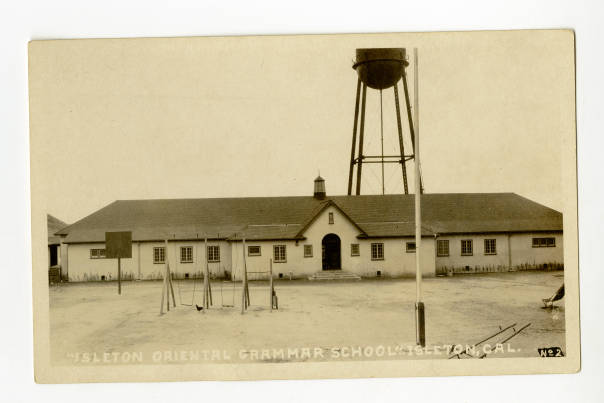
Segregated Schools
By 1920, there was a surge in the number of Japanese Americans of school age. Because they were U.S. citizens by birth, these children had a constitutional right to public education. In Isleton, the separation of students seems to have continued within the Isleton’s only grammar school.
The growth in Japanese American families may have played a role in a legislative initiative in 1921, when the school laws of California were revised, establishing the option for school districts to create separate schools for children of Native Americans or youngsters of Chinese, Japanese or Mongolian parentage. The motivation was revealed in descriptive language accompanying the list of affected groups: “Children of filthy or vicious habits or suffering from contagious or infectious diseases.”
A new school, a two story structure, was built that year for Isleton’s Caucasian students. The old school became the Oriental Grammar School. Segregation in California public schools was permitted until statutes in the state education code were challenged in court after World War II, and removed when Governor Earl Warren signed a state legislative bill in 1947. California thus became the first state in the nation to officially desegregate its public schools.
The Oriental grammar schools in Sacramento County in the 1920’s did not meet the separate but equal standard. Books at the Elk Grove school were outdated, equipment broken or worn out. Kelsey Owyang cites in her University of San Francisco thesis My Generation Will Never Forget the searing contrast in educational facilities: “Connie King explained how the Whites’ school in her native Isleton was ‘beautiful…a big building, very, very beautiful with shrubs and lawn’ while the Oriental school was “nothing but a gray building and no lawn, but gravel ground.”
Marion Owyang Wong was born just after the fire, in 1916, and attended Isleton Oriental Grammar School until 1928. Her father was a sharecropper in the Delta, getting a percentage of each harvest’s proceeds. She recalled in an interview that all the farm worker kids, including mixed race children, went to the Oriental school.
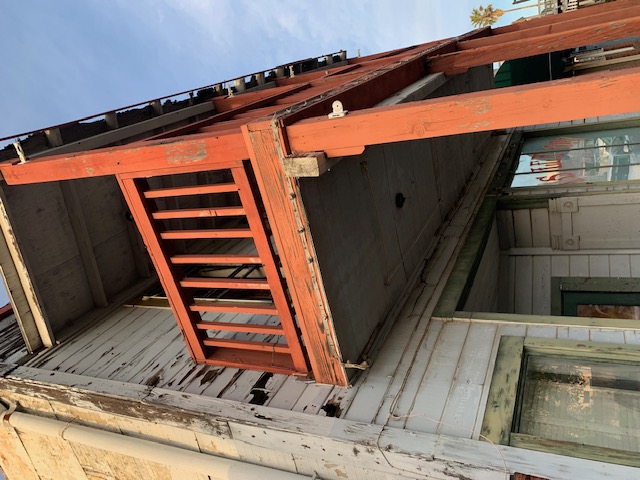
Language And Other Barriers
The Chinese American kids in Owyang Wong’s classes, she recalled, would have nothing to do with the Japanese Americans. “The two countries had never gotten along” was her observation. But it likely was deeper than international divisions, as the parents were competing for work and housing and had cultural differences that went beyond speaking different languages
Oral histories indicate that most of the Asian American grammar school students in initially struggled with English. One recalls classmates, when called upon, would start out answering in halting English and then finish the sentence in the language they knew best. Or vice versa. Betty Fuiimoto Kashiwagi recalled her class days in Isleton:
“And so when we went to school, only time we spoke English was when we have to talk to the teacher, or to the other nationality kids. But like, come recess, all the Japanese got together and spoke Japanese.
An English language learner at another segregated school in Sacramento County tells of repeated threats by a teacher to wash his mouth out with soap for speaking an Asian language. He also was kept after school, and then held back a grade because of challenges communicating in English.
The teachers in the Delta’s segregated schools were Caucasian. There were no tutors, or class aides from the community. Census records reveal most of the Japanese immigrants were from rural areas in southern Japan, with limited educations themselves. In Isleton’s Asian commercial district, operators of boarding houses or shops picked up enough English to do business with non-Asians, but on farms the gang boss was usually the one who communicated with land owners, and explained terms of employment to the field hands.
Isleton was growing in the 20’s, the population passing 1,000. Part of that growth was a Japanese American baby boom. There were now car dealers, and garages to maintain vehicles and farm equipment. A phone company was in place, along with a gas station as technology advanced. But the other shoe dropped for Japanese and Chinese residents when the1924 Immigration Act became law. More restrictions on immigration had been introduced in Congress during Woodrow Wilson’s presidency, but he opposed them. His successor, Calvin Coolidge did not, quickly signing into law the Johnson-Reed Act, the most restrictive immigration legislation yet. It banned immigration from Asia and reduced European newcomers, particularly from southern Europe. Its passage voided the Gentlemen’s Agreements with Japan’s government.
The one-two punch of the Alien Land Law coupled with the Johnson-Reed Act stunted the boom in babies of Asian heritage. The laws were not rescind for decades and Japanese immigration would never again reach the relative levels of the time between 1910 and 1925.
Devastating 1926 Fire
On Memorial Day, 1926, another fire torched Isleton’s Asian community. According to the Sacramento Bee, the blaze started in a building near what the article called the migrant school where 300 Japanese American and Chinese American children were in attendance. A woman reportedly warming milk on a kerosene stove responded to it boiling over by using a towel. The cloth caught fire and the building became engulfed and flames spread to adjacent structures and then blocks.
The Bee summarized the devastation: “Over the ashes, still smoldering from yesterday’s conflagration which destroyed 110 Chinese and Japanese stores and homes, leaving 1,500 Orientals homeless, and resulting in a loss estimated from $500,000 to $750,000, plan were made today to replace the destroyed village with a modern fireproof town of brick structures.”
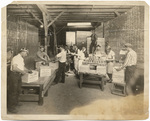
The students escaped but seven were burned. Fifty cars were burned. The response from fire fights was retarded because they were at a picnic. Rio Vista’s fire department came to their aid and was credited for saving the Isleton Cannery, along with the cannery’s own emergency response men. The smoke from the fire attracted onlookers who became so dense Boy Scouts had to direct traffic so relief services could gain access.
The rest of Isleton was not incinerated, except for a small portion of the Gardiner Improvement Company’s buildings. The company, through its bank, proposed to finance much of the rebuilding, although only a few of the envisioned brick structures went up. But fire resistant roofs and tin siding were used, with general relief offered by the Japanese Association of Northern California, Japanese Salvation Army and Chinese organizations from Stockton, Lodi and Sacramento. In today’s dollars, the fire’s estimated loss would be more than 13 million dollars.
One thing that boosted Isleton’s economy as the Depression started was the extension of the Sacramento Southern Line. Originally built from 1906 to 1912, the line initially ran from Sacramento to Walnut Grove. But in the late 20’s, 10 miles of new tracks were laid by the Southern Pacific parent company along the east side of the Sacramento River. This provided an option for getting pears, asparagus, celery and sugar beets to processors and buyers. It was further extended three more miles to a cannery near the Mokelumne River a few years after opening in 1931.
1930’s Heyday
The Dustbowl was responsible for new competition for jobs in California’s agricultural regions like the Delta, as Okies showed up looking for seasonal work, and permanent jobs. Filipinos also grew in number as farm workers in the 30’s and became part of the mix of Asian residents in Isleton.
But even with that change, the Japanese community was reaching a zenith, as the waves of babies became teens and then young adults. Throughout the Valley and Bay Area, there were activities on weekends that included town teams competing in baseball and basketball, judo and sumo tournaments, regional church and Japanese Association meetings. A new national group was formed, the Japanese American Citizens League.
Another newcomer in the 30’s was Noryuki Morita, born in Isleton in 1932. He developed spinal tuberculosis when two years old, and had to be separated from his family for treatment in Placer County and then at Shriner’s Hospital in San Francisco. For most of his youth he was in a full body cast. At some point he acquired the nickname of “Pat.” Morita became one of Isleton’s most famous natives as a comedian and actor in Happy Days and The Karate Kid.
The oldest of the second generation, the Nisei had a wider range of educational and professional opportunities. College of the Pacific was nearby in Stockton, as well as a junior college started in 1935. Some Japanese high school students, especially female ones, did so well that they could attend the University of California in Berkeley, where a dorm had been established for Japanese American women.
Sacramento and Stockton had supportive Japanese communities, and young people could take vocational training in those cities or obtain entry level positions to start careers and have places to live and socialize with friends. The world was opening up to them. And then it closed.

Pearl Harbor and the Executive Order
Betty Fujimoto Kashiwagi had gone to services at the Buddhist Church on the morning of December 7, 1941. She was 12, and recalls changing out of her church clothes and going outside to play marbles. Her mother called her children inside and told them “The Japanese have bombed Pearl Harbor.” Betty didn’t know where Pearl Harbor was, nor did she have a sense of where Japan was in relationship.
In short order, FBI agents showed up at the boarding house and searched it and their family’s rooms. The only thing they found of interest was a sumo wrestling medal won by her father. As the initial shock wore off, anxiety set in. There were curfews, and restrictions on travel.
In Isleton, Kashiwagi witnessed some of the Chinese American youngsters throwing rocks at the Nisei kids, and hurled verbal insults at them, too.
On February 19, 1942, President Roosevelt signed an Executive Order, #9066, which sealed the fate of all Japanese and Japanese Americans living in the West Coast states. It also was the death knell for Isleton’s Japantown, although that wasn’t immediately apparent.
No one knew how long the war would last, or who would prevail. But the U.S. government had decided more than 120,000 first and second generation humans of Japanese heritage were such a threat that they needed to be removed from their homes and livelihoods and kept in concentration camps.
Walerga Assembly Center
Executive Order 9066 gave authority for the War Relocation Authority to put a removal plan into place. On March 29, signs were posted in Isleton giving a few days notice to the Japanese community that they should report to Camp Kohler for incarceration. They would be allowed only what they could personally carry to Walerga, a rural spot 55 miles north. Never mind that crops had been planted in the nearby Delta fields, some of which would need picking within a few months, or that farmers had leases to honor. A number of Japantown families stored possessions at the Japanese language school on Main Street. Shop keepers had to liquidate inventory, or find someone to take over. Some store fronts were boarded up, initially to prevent vandalism.
The group from southwest Sacramento County was given the latest reporting date, May 20th. A total of 576 from that part of the county were bused to what had been a migrant worker camp. The site, with additional construction, was not ready. It still had a long list of flaws, noted by the newly secured staff. It had been a rainy spring in the region, and the ground where barracks and other buildings were constructed was uneven. Newly laid floors buckled and there were spaces between planks. Sections of roof fell off when it was windy. On calm days mosquitoes bedeviled the residents and staff alike.
“I think Walerga was the worst of all camps. It was the crudest.” recalled Kashiwagi. “I’d never had to use an outhouse with twelve other people.” The pit toilets, the open shower room with no way for bathers to control the temperature, and a kitchen where flies were often abundant were just some of the shortcomings of the facility. Interior walls in the arracks didn’t go all the way to the ceilings, so conversations could be overheard and if someone turned on a radio everyone had to listen.
The Isleton families were a tiny part of the total population, which was dominated by people from Sacramento’s Japantown. There was bad blood among the urbanites, especially focused on leaders of the Japanese American Citizens League chapter, who were accused of giving a number of inmate jobs to themselves, friends and family members. The rancor was so bad that when the inmates were transferred by train to Tule Lake Relocation Center in June, the baggage of several JACL leaders was vandalized.

Tule Lake, Rohwer, Jerome
Kashiwagi would earn her ability to judge the level of depravity at incarceration facilities.
She and the rest of those held at Walerga were initially taken north by train to the high desert of California, just short of the Oregon border. The nearest town of any size to the Tule Lake Relocation Center was Klamath Falls, 40 miles north in Oregon. Her family would be transferred later to concentration camps at Jerome and Rohwer in Arkansas.
The facility at Tule Lake was an improvement over Walerga as far as construction was concerned. The camp was the largest of the ten “relocation centers” in population, and its surrounding open space covered an immense area. The Modoc Indian Wars had been fought not far away in volcanic lava beds, the last battles between the U.S. Army and Native Americans in the 19th century.
Because of the elevation, it was very cold and windswept in winter. The Sacramento County families packed for the time of year they had to report for assembly. Now imprisoned in Modoc County, they scrambled to obtain coats and sweaters, some resorting to order them in the Sears Christmas catalog. Once again, the people from southwest Sacramento County were marginalized in the politics of forced removal and incarceration. They were viewed as the country bumpkins by some of the younger city slickers, particularly from Los Angeles. The L.A. contingent was much more likely to object to the conditions under which more than 10,000 were held at Tule Lake. They were considered to be troublemakers by the camp’s managers.
In early 1943, the government developed a questionnaire for the more than 100,000 imprisoned Japanese and Japanese Americans. It was intended to help decide who could be trusted as loyal to America, and especially who might go into an all Japanese American Army unit they were planning. The survey not only failed in those goals, it further divided and poisoned the camp population. Its impact lasts until today, and marked the lives of many of those at Tule Lake in particular.
The idea that you could present a survey in English, when many of those who were ordered to fill it out could only read and write in Japanese, was uninformed. While most of the questions asked for basic information about the respondents and their families, some were long and others had multiple elements that especially confused elderly immigrants.
Two of the questions, numbers 27 and 28, became the focus of camp discussions. They asked if respondents who were Japanese citizens would renounce it, and forswear loyalty to the Emperor of Japan. Male adults were asked if they would serve in the U.S. military, females were asked if they would work for the government in a non-combatant role.
A number refused to take the survey at all. Officials threatened to fine them $10,000 or put them in jail, and transferred some under armed guard to county jails to show they meant it. Of the 10,843 who did fill it out at Tule Lake, 30% gave a response that the government deemed disloyal to question 27, and 15% to 28.
The War Relocation Authority had planned to build a prison in Utah to handle those they deemed disloyal from all of 10 facilities. They did not anticipate results the flawed exercise produced, and they scratched the Utah plan and decided to make Tule Lake into a segregation center. By July, 1943 Tule Lake was being transformed with a concrete jail within the concentration camp, more guard towers, soldiers brought in to maintain order and even tanks.
Sixty five hundred incarcerated at Tule Lake who were considered loyal were exchanged for the so-called “no-no boys” from other camps. The bulk of them went to Arkansas’ two facilities. Tule Lake became even more difficult for those who were imprisoned, and their keepers. The newcomers in Arkansas brought some of the bitterness of Tule Lake with them, and many had trouble fitting in.
During 1943 thousands held in the concentration camps had been released to the interior of the country to attend school, work or join the military. The population at Jerome dropped so much it was closed, and its dwindling population was transferred to nearby Rohwer. That’s how Betty Fujimoto Kashiwagi was in so many different places during her incarceration, even though she was just a child and never considered disloyal.

When Kashiwagi returned to Isleton, her parents both got jobs working at Bayside Cannery. She attended Rio Vista High School. But no Japanese families, she said in an oral history, moved back to Main Street. A number of Chinese stores were open, and she particularly remembers a Chinese restaurant. And a number of Filipino stores were in business. Mexican braceros were present as well, brought in during the war to work in the fields and on public works.
Alyce Nakao, a classmate at Rio Vista High, could compete with Betty about feelings of dislocation. Born in Newcastle in the Sierra Foothills, her family moved to Marysville before being uprooted for assembly and then relocation in Tule Lake. When released from camp, the Nakao family’s best choice for shelter was crowding in the back of a pool hall on “C” Street in Walnut Grove, an appreciated sanctuary arranged by a relative.
Alyce tells AsAmNews she took the bus to start at Courtland High School. But her father sought more stability for his family, first by going to Thornton, which didn’t last long. He was then hired as a foreman at a cannery outside Isleton, a position that included housing. Then it was back on a bus for Alyce, as she rode across the bridge to attend Rio Vista High School. She liked going to Rio Vista High—it was the most settled time of her young life. After graduation, she moved to Sacramento and attended Heald Business School while working as a “school girl” for a wealthy family.
Like Betty’s parents, several others who had operated shops on Main Street before removal also found employment at the canneries. But the majority of the merchants from before the war did return to Isleton, a trend experienced in other Japantowns. In nearby Clarksburg, according to a California Delta Commission article, about 100 Japanese families were removed in 1942. Twenty five returned but only 10 stayed on past a year or two.
Kashiwagi never forgot her years growing up in the Delta. She was the ring leader for Japanese Americans from Isleton who had reunions every year starting in 1979 and going into the early 2000’s. They were held often in Sacramento, because a number of Delta Japanese Americans had relocated there. But they were also in San Jose, Benicia, and even Los Angeles.

Telling The Story Anew
For decades, Sacramento County leaders have been interested in attracting more tourists. Go For The Gold was one advertising slogan, driven by the notion that visitors to Sutter’s Fort and Old Sacramento could be lured into staying another day or two for agritourism, Lake Tahoe, or river rafting in the foothills. Towns in the Delta collaborated on tourism, too, particularly around the growing wine sector with the Old Sugar Mill in Clarksburg pitched as an entry point.
Locke is having success with a museum housed in a former boarding house, which had been operated by a Japanese family displaced by removal during World War II. There is a pocket memorial off its main street, with plaques purchased by Chinese American and Japanese American families to remember their ancestors who lived in Locke. Just a mile south on the Sacramento River, Walnut Grove has a remarkably preserved Japantown and adjacent Chinatown, also rebuilt after a fire, that is a destination on weekends and summertime for visitors from the Bay Area and beyond.

With the Asian American Heritage Park, Isleton will have a new attraction to complement a series of efforts to preserve and promote its Main Street and surrounding community. Jean Yokotobi tells AsAmNews that inquiries about visiting the park have already been received. A group of Chinese Americans from the Bay Area is coming in to see the blocks that are listed in the National Registry of Historic Places as the Isleton Chinese and Japanese Commercial Districts.
The new park, on a lot Yokotobi donated, is right next door to the Isleton Museum which is opened on Saturdays by volunteers from the Isleton Brannan-Andrus Historical Society. The museum is sited in the historical Bing Kong Tong building at 29 Main Street, and has an exhibit titled Revisiting Isleton’s Forgotten Japantown. It includes John Tomita’s oral history interview. His family lived at 50 Main Street in Isleton. They came back after incarceration, but then left as so many did as the great dislocation continued.
Isleton as a community has a growing understanding of its history, and the potential represented by visitors from China and Japan who come to tour San Francisco and see Yosemite. They might embrace a stop along the way, where an appreciation for their country’s contribution to California is acknowledged and present to touch, photograph and reflect on. There are shops and places to eat on Main Street, as a number of the historic structures from 1926 have been repurposed, some lovingly restored and others still needing attention.
There’s also the potential of the school circuit, with Sacramento County already benefitting from a bevy of 4th grade visitors learning about California history who picnic on the Capitol grounds, sit in Old Sacramento’s school house and then see Chinese workers depicted right after they go through the front doors of the state park’s railroad museum. Older students studying the U.S. constitution and race discrimination would have plenty to think about in Isleton after reading the park’s planned interpretive panels, viewing a water sculpture, and sitting and conversing in a contemplation area featuring the bell from Walnut Grove’s Buddhist Church.
“You not only get a glimpse of history,” Yokotobi tells AsAmNews. “But also some opportunity for meditation and reflection.” The fountain and sculpture to be created by Yoshio Taylor will be the final element installed in the Asian American Heritage Park. The project, funded by a grant from the Sacramento-San Joaquin Delta Conservancy, is scheduled to be completed in the fall, just in time to mark December 7, 1942, when everything changed for those lived in Isleton’s Japantown.
AsAmNews is published by the non-profit, Asian American Media Inc.
Happy Lunar New Year. We are now 40% of our goal of meeting our $5,000 matching grant challenge with less than 8 full days to go. Every donation will be matched dollar for dollar through February 16 up to $5,000. All donations will go toward fully funding an editor position at AsAmNews and to support our reporting. You can make your tax-deductible donations here via credit card, debit card, Apple Pay, Google Pay, PayPal and Venmo. Stock donations and donations via DAFs are also welcomed.
Please also follow us on Instagram, TikTok, Facebook, YouTube and X.

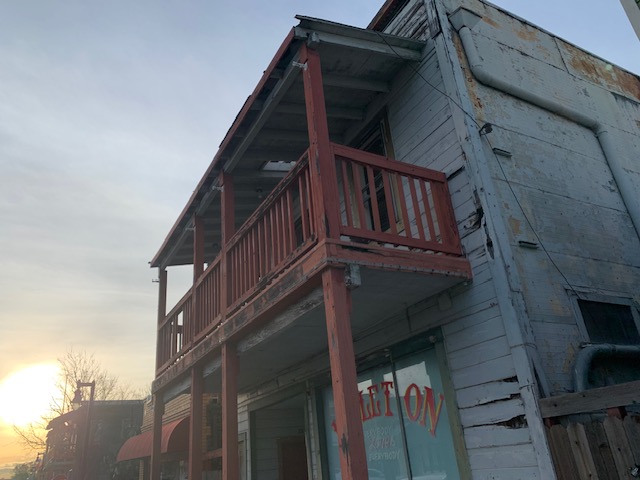

What an interesting history lesson with an over-due and well deserved ending
Well written, informative and interesting.
Thank you for all the work and then sharing
Hats off to everyone who worked to bring the project to fruition, many people are going to benefit from your efforts
This is great overview of this ignored history. I’m in the process of acquiring what was the Tomita family gas station and garage on Main Street and I’m hoping to find pictures or any additional information on the buildings history, especially when it was owned by the Tomita family. I’m a yonsei from Sacramento. My grandparents worked in family owned businesses in Sacramento’s Japantown prior to the outbreak of WWII and my mom was born at Tuke Lake.